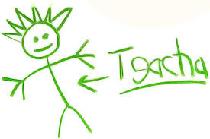While there is no by-the-book, one-size-fits-all method for teaching/coaching with embodied exercises, it is usually wise to consider (and not confuse) the following aspects:

CAMPCRAP: Connection, Aim, Motivation, Practice Method, Consequences, Results, Application, Practice
Connection
– Develop a helpful relationship with the learners
This might be achieved though eye contact, humour, touch, etc. We facilitate in relationship and this part is critical as without connection the best techniques are ineffective.
E.g. “hi guys, good to see you again, I heard some people were fired since I saw you last and I’m glad it wasn’t you!” “Let’s do a quick check-in to see how you all are today before I throw some more hippie stuff at you”.
Aim
– Have a clear purpose for the exercise
This is also the results of an exercise. Have a clear intention in what you are facilitating and pass this on. What’s the point?!
E.g. “to learn how to manage your state under pressure we will…”
Motivation
– Connect the aim to what matters for learners
Do not assume people see why a practice matters, help them link it to what they care about. How does it connect to their values and goals?
E.g. “So you can be better at your job”, “would you like to be less stressed with your kids?” or “When would it help to be more relaxed under pressure?” (coaching method to elicit motivation).
Practice Method
– Clear step-by-step doable instructions on how to do the technique
These need to be individually (e.g. yin and yang type variations) and culturally adapted (e.g. business language). Instructions should be concrete and doable, not metaphor or confused with consequences or results – e.g. “clear your mind” (bad example!). One can also appeal to the unconscious by using metaphors such as “sit like a mountain”. These are sometimes called “back-door” instructions and can save a lot of time but they don’t work for everyone and can be confusing. If in doubt, get granular (a finer level of detail) and check people can do the instructions, if they can’t break them down further.
E.g. “Let your belly muscles hang loose. If that’s hard, tense them first and then stop tensing them”. “You might try adding a visualisation of a star expanding in all directions too” (water/yin centring adaptation).
Consequences
– The immediate effects of the practice
What happens in the moment as a result of the method. You can say this, ask or let people discover it through experimenting. Effects will differ. If the exercise is just for insight there will be no result in addition.
E.g. “You may feel relaxed”, “How do you feel?” “Do you feel the same, better or worse?” (neutral as covers all options), “On a scale of 1-10 how stressed are you now?” (before and after technique known as SUDS), “I felt tired”, “I see how I push back under pressure” (insight).
Results
– The longer term results of the practice
Why you bother. May differ from effects – meditation for example can make people stressed in the moment as it’s often hard but leads to less stress! It’s a repetition of the aim or proof that the method works.
E.g. “improved state management under pressure” “to get you shit together.”
Application
– The link to people’s lives so they can apply the exercise
You may have already done this in motivation, if not do it after. After trying something, people often think of new applications though so good to repeat. Help people be specific about when they can use the skill as “all the time!” becomes never.
E.g. “so when can you actually use this in your life?” “when’s a concrete time this week you can put this into action?”
Practice (some more)
– Helping people establish a practice so learners develop the skill
Insight can be achieved though one embodiment session however, if people are to learn skills or truly transform they need to practice. Help people be specific, set reminders, get accountability/support and whatever else will help. Application is not practice (rehearsal vs performance)!
E.g. “so when in your life could you practice this for one minute a day?” “could you centre each time you turn your computer on?”
View Integration Training videos here:
For info on our training courses click here